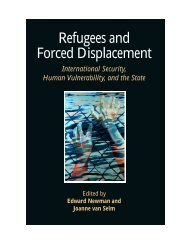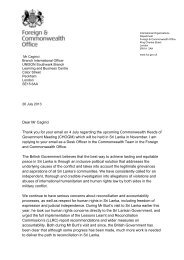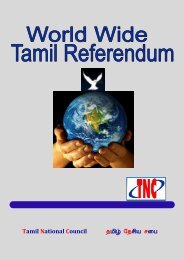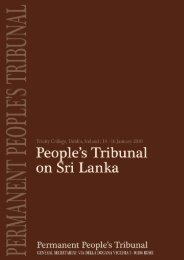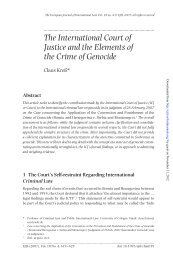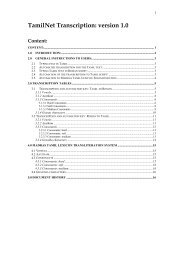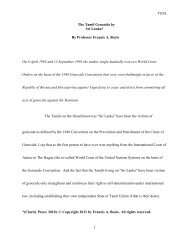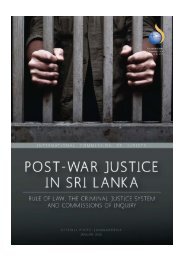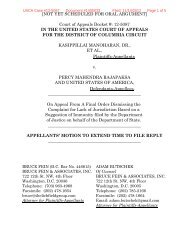Proposal to encode characters for Extended Tamil §1 ... - TamilNet
Proposal to encode characters for Extended Tamil §1 ... - TamilNet
Proposal to encode characters for Extended Tamil §1 ... - TamilNet
You also want an ePaper? Increase the reach of your titles
YUMPU automatically turns print PDFs into web optimized ePapers that Google loves.
transliterated by (the glyphic equivalent of) TAMIL MA + TAMIL VIRAMA + SUPERSCRIPT THREE. Ifthe character TAMIL SIGN ANUNASIKA is given GC=Mn, then one must consider how thisvariant is <strong>to</strong> be implemented because the character should then properly get GC=Mc. Mysuggestion is that this character take GC=Mc.For the variants where the character is non-spacing, the situation is <strong>to</strong> be handledlike the TAMIL VOWEL SIGNS U/UU which both have GC=Mc but <strong>for</strong> all native <strong>Tamil</strong>consonants are effectively non-spacing as they ligate with their base. Going by thisargument I have chosen <strong>to</strong> give this character GC=Mc.6.2. Substitution rulesWithin ET-L, there exist two major variants as described above. One system uses Granthastyleglyphs <strong>for</strong> even native <strong>Tamil</strong> consonant <strong>characters</strong> when they take Grantha-style<strong>Extended</strong> <strong>Tamil</strong> vowel signs. It also uses only the Grantha-style virama glyph with Granthastyle<strong>Extended</strong> <strong>Tamil</strong> consonants even though the virama character <strong>to</strong> be used in theUnicode representation of <strong>Extended</strong> <strong>Tamil</strong> is the <strong>Tamil</strong> virama. Another system does notuse Grantha-style glyphs <strong>for</strong> native <strong>Tamil</strong> consonant <strong>characters</strong> and uses the <strong>Tamil</strong>-stylevirama glyphs <strong>for</strong> even Grantha-style consonants. These two versions may be handled bysmart-font rendering by the turning on or off of the following two rules:TAMIL CONSONANT + TAMIL EXTENDED VOWEL SIGN → GRANTHA CONSONANT + GRANTHA VOWEL SIGNTAMIL EXTENDED CONSONANT + TAMIL VIRAMA → GRANTHA CONSONANT + GRANTHA VIRAMAI have also already mentioned that in (at least one variant of) ET-C, the double avagrahawould have <strong>to</strong> be handled as follows:TAMIL EXTENDED SIGN AVAGRAHA →LEFT PARANTHESIS + TAMIL LETTER A + RIGHT PARANTHESISTAMIL EXTENDED SIGN AVAGRAHA + TAMIL EXTENDED SIGN AVAGRAHA →LEFT PARANTHESIS + TAMIL LETTER AA + RIGHT PARANTHESIS6.3. Consonant clustersFor consonant clusters in which <strong>Tamil</strong> <strong>Extended</strong> consonants are involved, there is noligature <strong>for</strong>mation except <strong>for</strong> K·SSA which is already present in <strong>Tamil</strong>. This ligature may berendered <strong>Tamil</strong>-style or Grantha-style, the minute difference being in the bot<strong>to</strong>m leftquadrant of the glyph. There are no conjoining <strong>for</strong>ms. While the question itself does notarise in ET-C, it does arise in ET-L where Grantha-style consonants are present. However,10




